See also Transits.

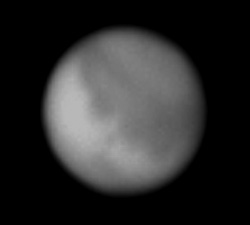
Left: Drawing by James O'Connor on 22nd October 2005. 25cm reflector. Syrtis Major is most prominent dark marking.
Right: Image by Liam Smyth on 20th November 2005. 50cm reflector. Sinus Meridiani is top left of centre.
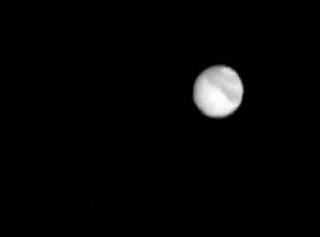
Mars coming to Perihelic Opposition. Image by Liam Smyth taken with a 20cm SCT (Celestron 8) at effective focal length 4000mm. 3hrs UT on August 8th 2003. ST-5 CCD. Unsharp mask applied. The disc of Mars was then 23.5" across. South at top.
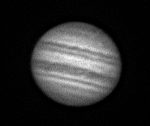
CCD image through a 20cm SCT (Vixen VC200L) at f/18, average of five 1-sec exposures. Processed using Unsharp Masking and High Pass FFT filters in Astroart 2.0. Taken by Gary Nugent on 2000 Nov 22 at 20.40 UT. The SEB is double and the NTB is prominent. South at top.
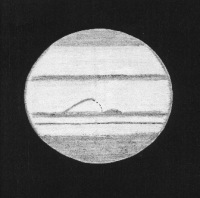
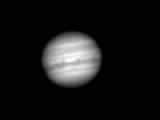
Left: Drawing of Jupiter done by Brian Noonan on 28th Dec 1999 at 20.59 UT. A disturbance is visible in the NEB, including
a white oval which spreads into the Equatorial Zone.
Takahashi FS128 at 208x. Seeing: IV. South at top.
Right: Taken by Liam Smyth with a ST-5 CCD Camera on a 50cm reflector (Tectron). 1999 Oct 11. South at top.
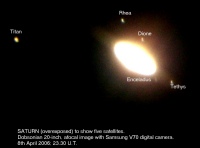
Apart from the overexposed disc of Saturn and it's rings, this closely matches the view in a large telescope. Titan is visible in a small telescope as is Iapetus at western elongation. Rhea, Tethys & Dione are more difficult. Enceleadus is much more difficult. Imaged with the afocal method with a 50cm reflector and a Samsung V70 digital camera. By Liam Smyth on April 8th 2006 at 23.30 UT. The somewhat ‘staggered’ appearance of the images is due to a gusty wind during the relatively long exposure.

CCD image through a 20cm SCT (Vixen VC200L) at f/18, average of seven 5-sec exposures. Processed using Unsharp Masking and High Pass FFT filters in Astroart 2.0. 2000 Nov 22 at 23.00 UT. South at top. Taken by Gary Nugent.
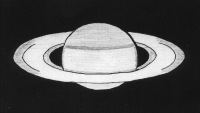
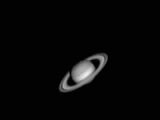
Left: Drawing of Saturn done by Brian Noonan on 28th Dec 1999 at 21.40 UT. SEB less prominent than usual.
Crepe ring, although difficult, was visible in moments of steady seeing.
Takahashi FS128 at 276x. Seeing: IV. South at top.